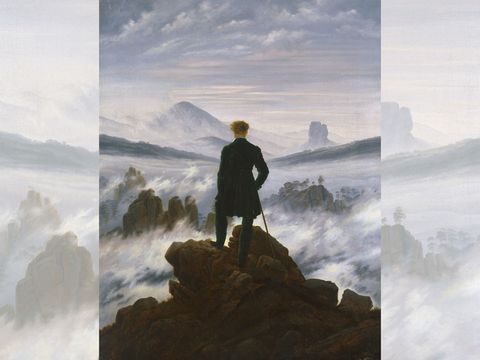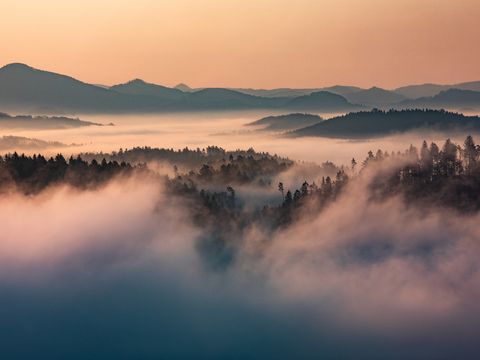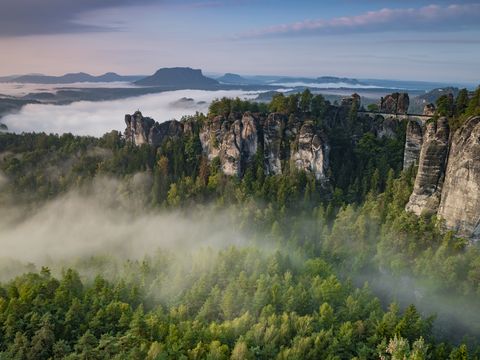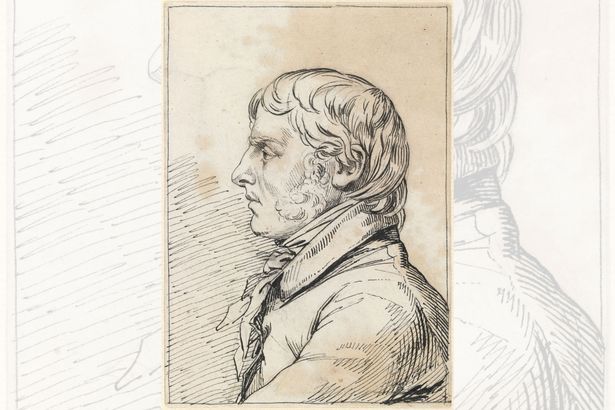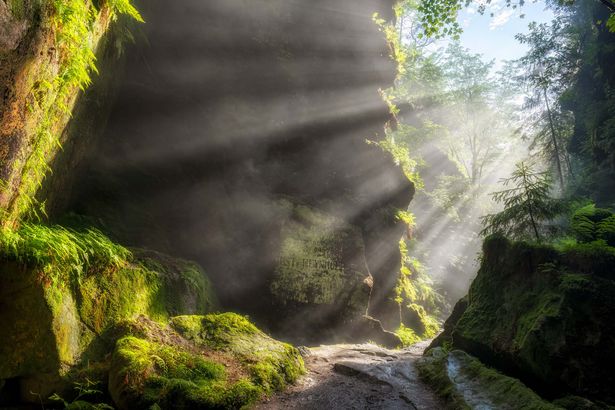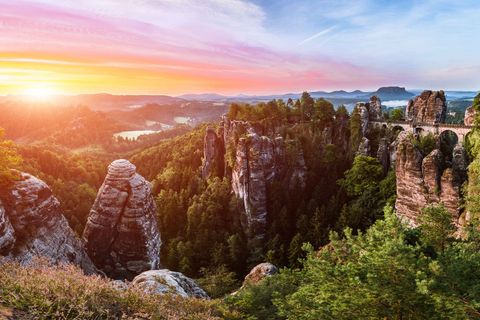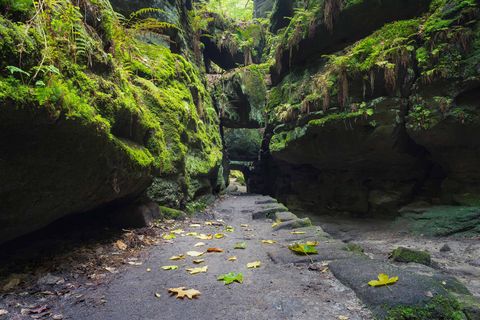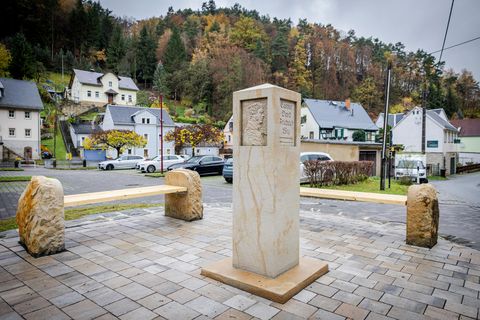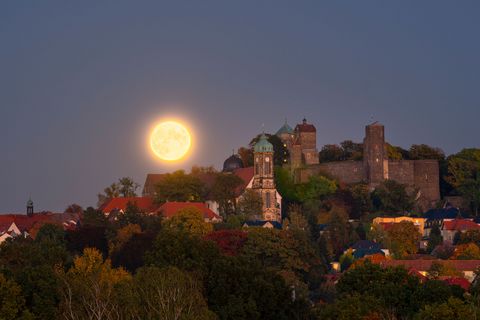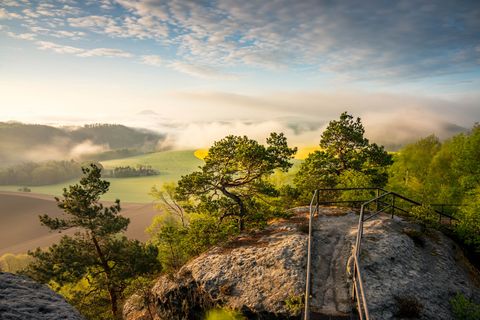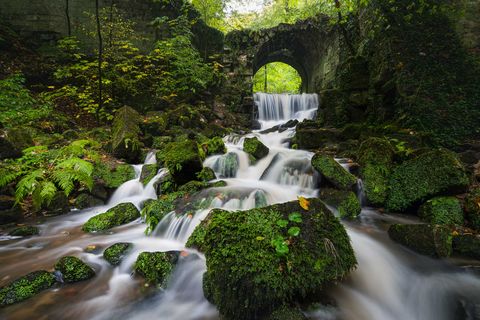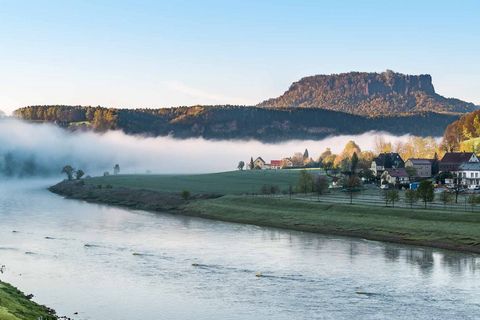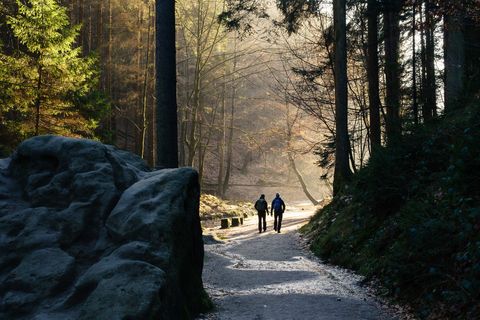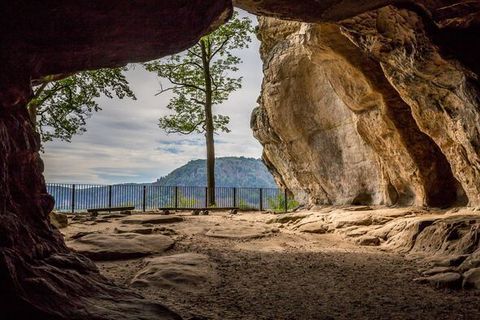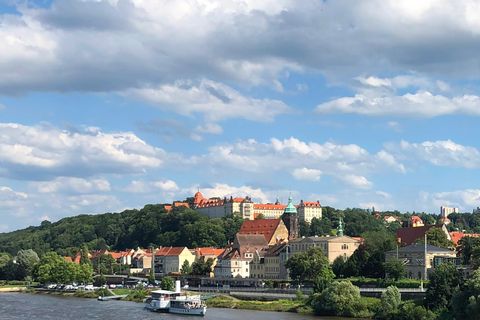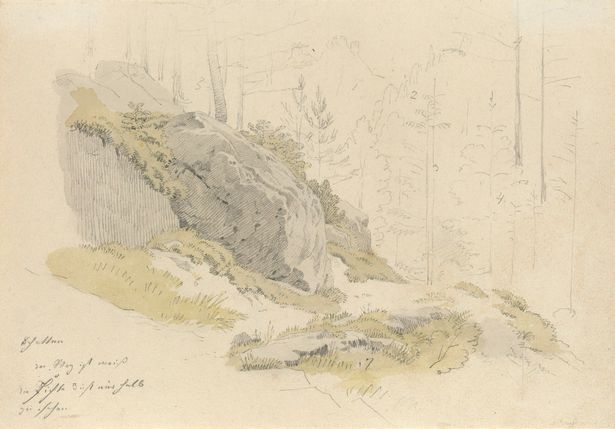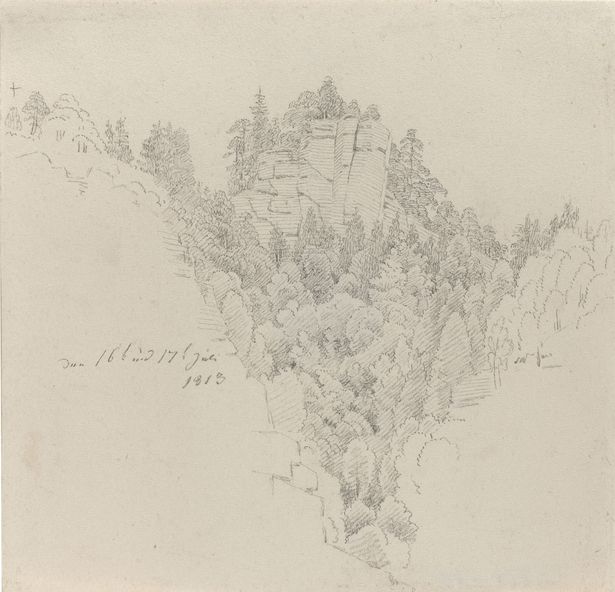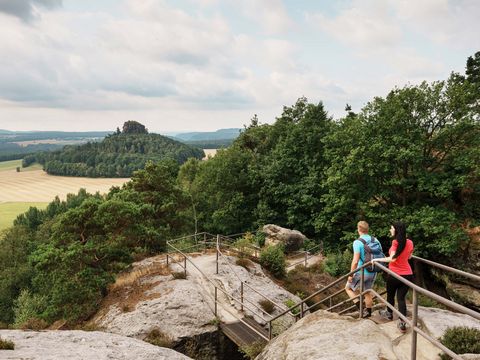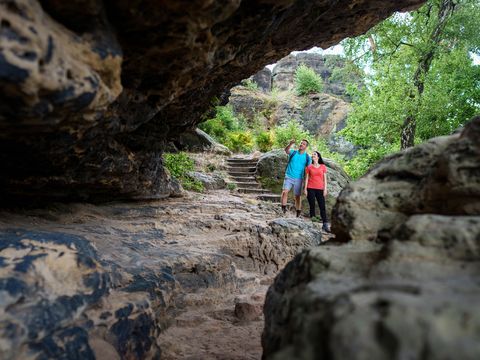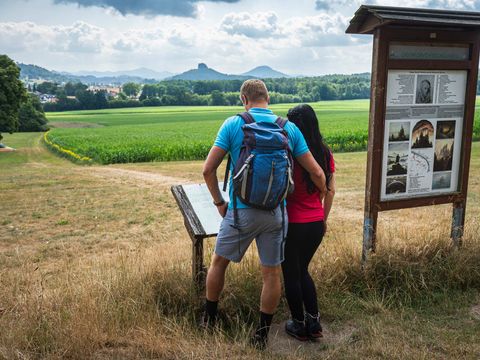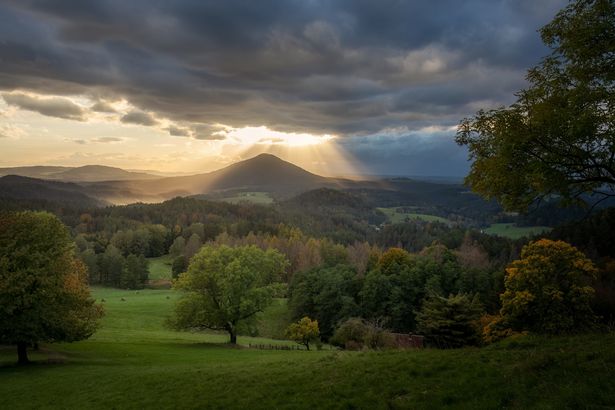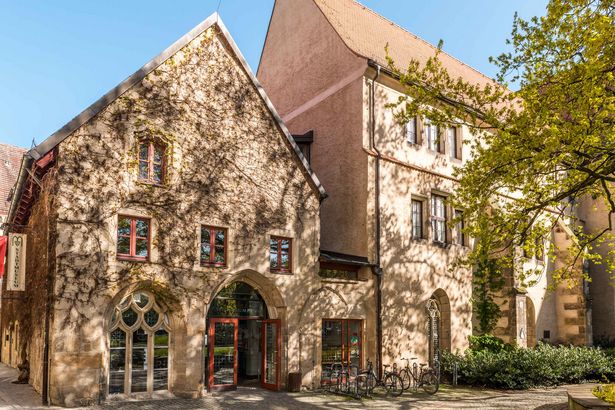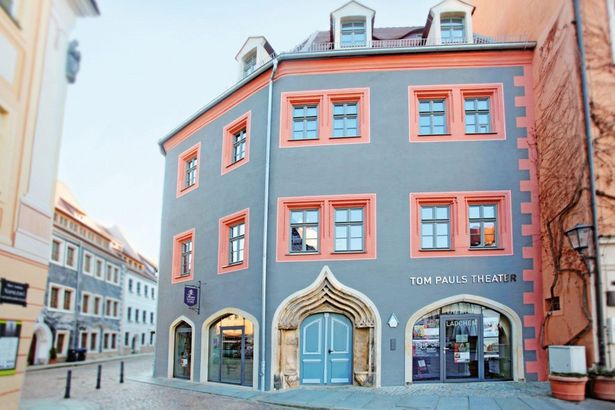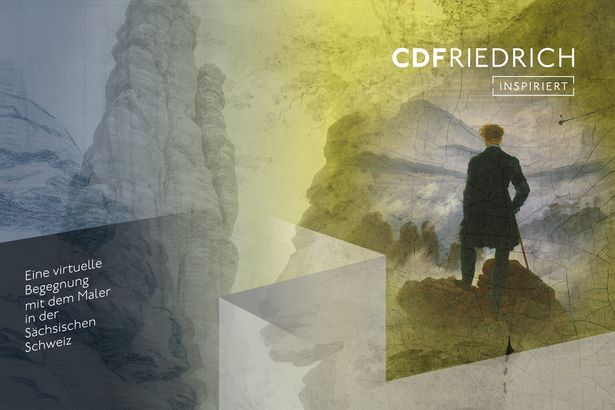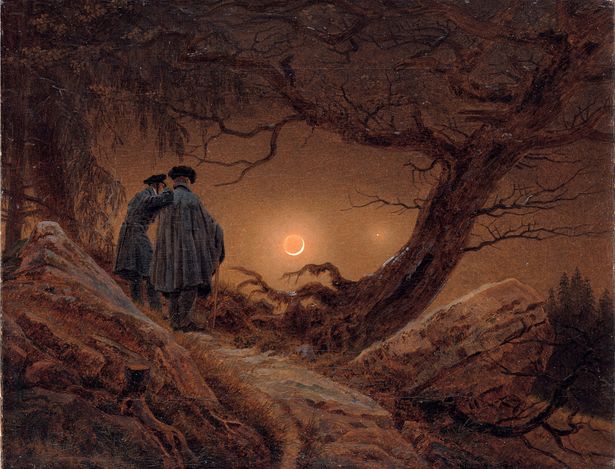The artist probably became acquainted with the wildly romantic rocky world of Saxon Switzerland shortly after his arrival through other painters working at the academy, such as the Swiss Adrian Zingg. At that time, the discovery for tourism was still to come. It was not until 1804 that the first travel guide to the region appeared: Wilhelm Leberecht Götzinger's "Schandau und seine Umgebungen oder Beschreibung der sogenannten Sächsischen Schweiz".
Friedrich, already a freelance artist at the time, visited the region several times to hike and draw. There are records of visits in the summer of 1800, 1808 and 1812, and the painter with the distinctive whiskers even lived here for several months at a time from spring to summer 1813. In the tranquil village of Krippen on the Elbe, in the house of his friend Friedrich Gotthelf Kummer, he sought refuge from the war and Napoleon, whom he hated. Saxony is the main theatre of the wars of liberation. Prussians, Russians and French take turns passing through Dresden. The fateful Battle of the Nations at Leipzig is imminent. Creating peaceful landscape impressions in the year of war: This is difficult for the sensitive artist with a tendency towards melancholy, who also sees himself as a patriot and takes a passionate interest in political events. "I have been away from Dresden for more than 14 days and live here in a very pleasant area. The stay here could be very useful for me if the events of the time had not so completely upset my mind and made me unable to start anything," he writes in a letter to a friend on 31 March.
It was not until 1 June that he was able to start again: "After a long time, I drew the first one", he noted in a sketch of a group of trees. More drawings followed, and the "Krippen Sketchbook" was created. 22 of the works created at that time have been preserved. They are filigree and astonishingly detailed depictions of rocks, trees and panoramas. Later he drew on this fund for his paintings. On 3 June 1813, at the foot of the Kaiserkrone table mountain, about an hour and a half's hike from Krippen, he put the drawing "Felsige Kuppe" on paper. It is the very rock on which he places his "Wanderer above the Sea of Fog" in his studio a few years later. Other mountains and rocks from earlier sketches from May 1808 can also be found in the picture: the Gamrig near Rathen or the Rosenberg in Bohemian Switzerland. In nature, these mountains are not united in one panorama. Friedrich is not concerned with the reproduction of an actual landscape, a concrete moment, but with a certain impression, an inner feeling. Religion, metaphysics, nature mysticism, psychology: all these resonate in Friedrich's works.
